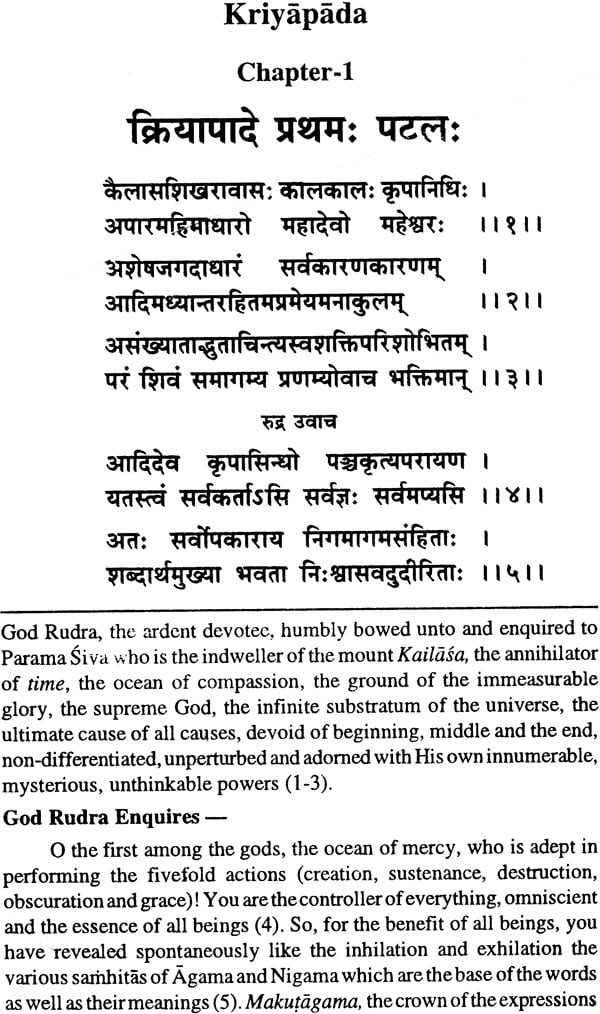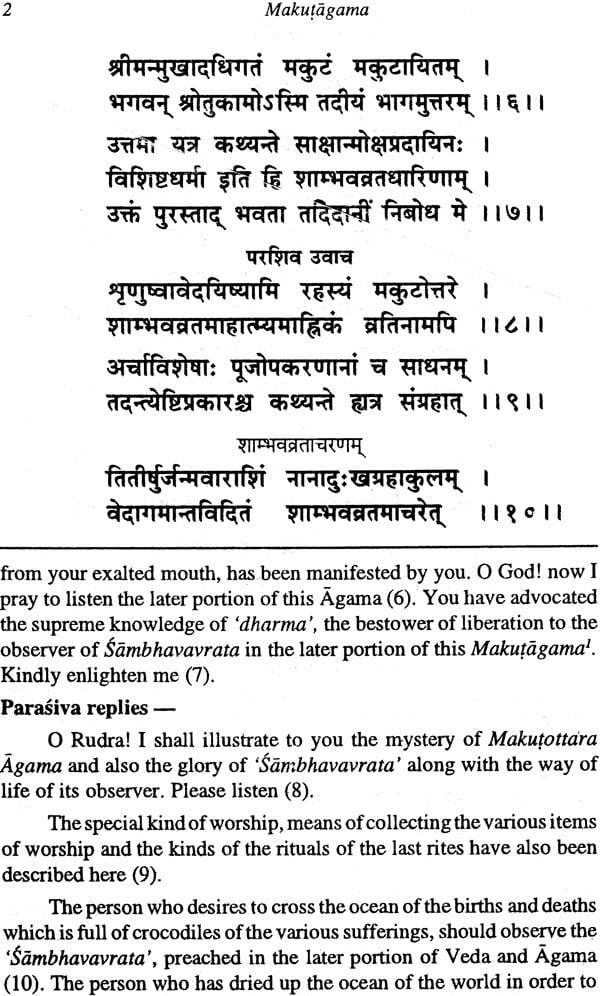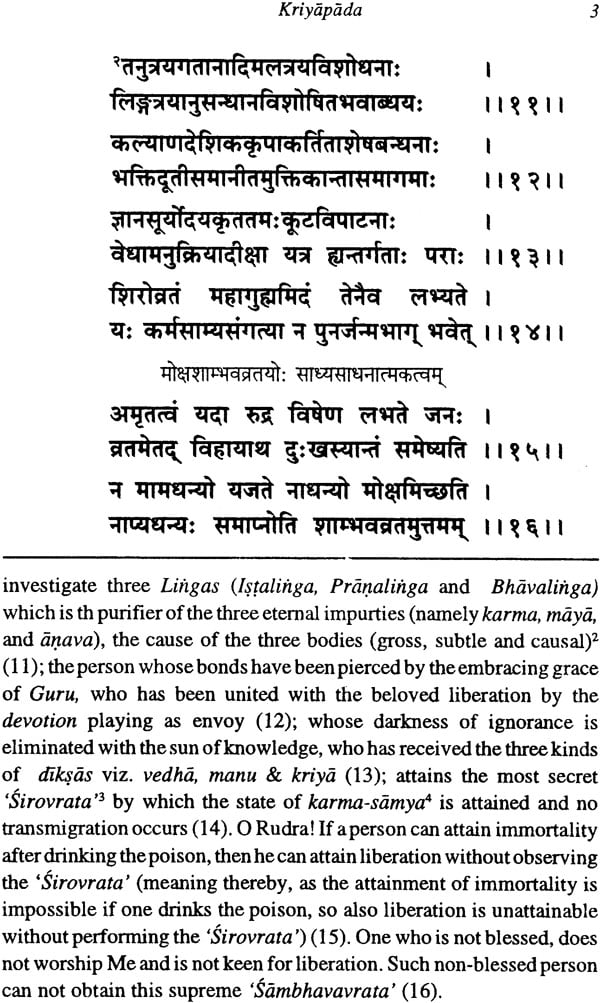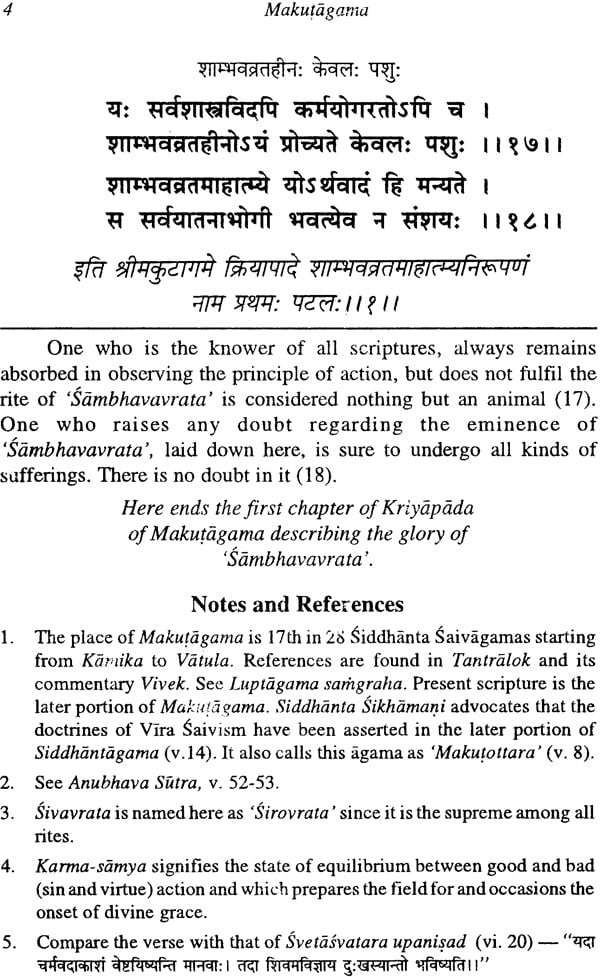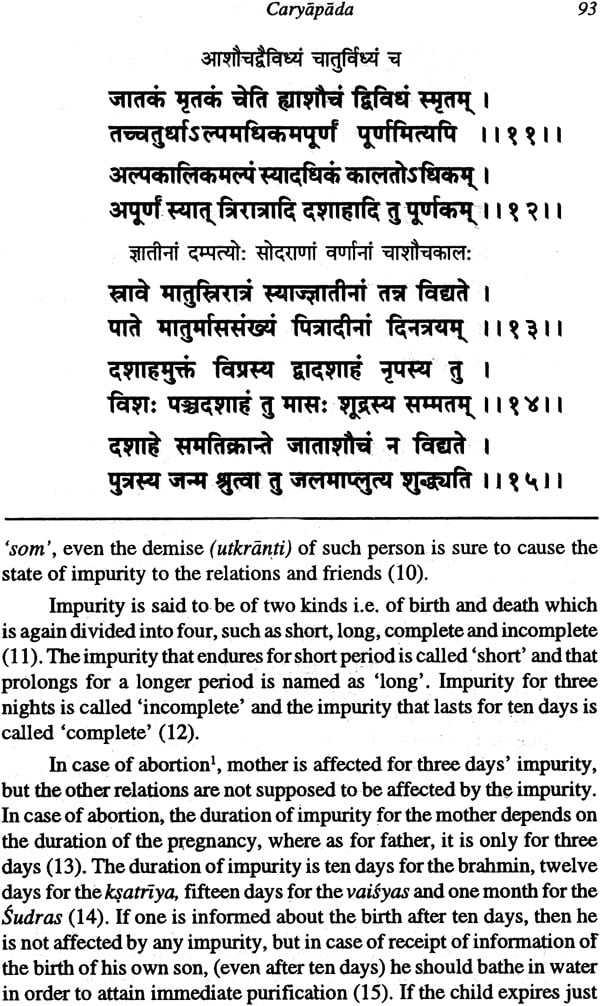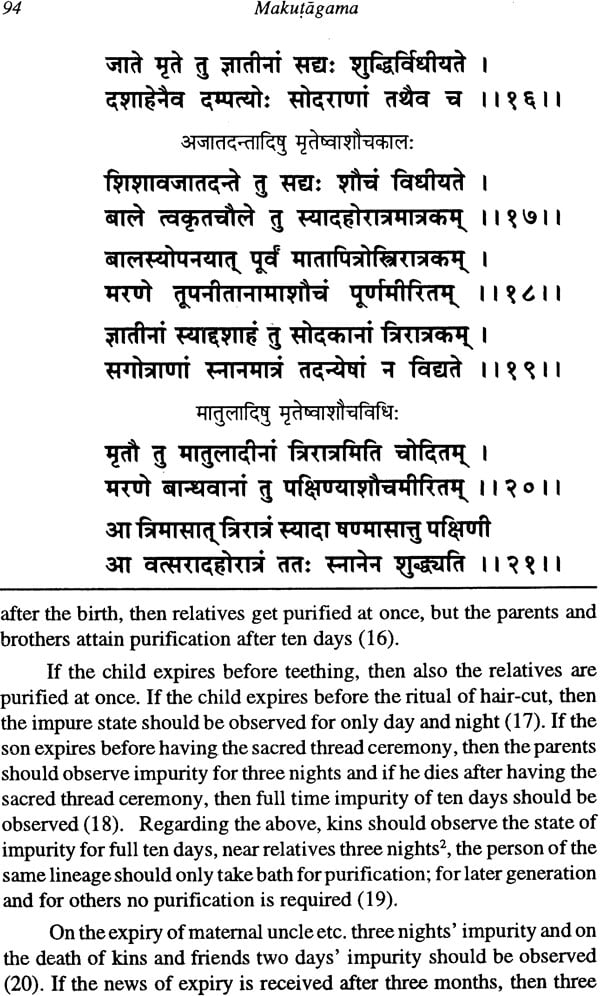
Makutagama Kriyapada and Caryapada
Book Specification
| Item Code: | IDK485 |
| Author: | Dr. Rama Ghose and Sanskrit Text Edited by Pt. Vrajavallabha Dwivedi |
| Publisher: | Shaiva Bharati Shodha Pratishthanam |
| Language: | (Sanskrit Text, English Translation and Notes) |
| Edition: | 1996 |
| Pages: | 145 |
| Cover: | Paperback |
| Other Details | 8.5" X 5.3" |
| Weight | 150 gm |
Book Description
Introduction
Indian culture is an amalgamation of both the vedic and non-vedic traditions. Aryan civilization has merged within itself many an element of the alien cultures. Not only that various trends of almost all the great traditions of the world have mingled with and constituted an integral part of the culture of India. A thorough study of the special features of the cultural and spiritual life of India, compels one to recognize the vast Puranic and Tantrik literatures also along with the Vedic and non-Vedic traditions.
A subtle and deep perspective of the Indian philosophy will reveal the truth the unconscious elements are neither different from nor opposed to the consciousness, rather are complementary and included in the all embracing experience of the Reality. Yoga and Tantra literatures also are in conformity with the above view. Tantra is much more wider in its spiritual disciplines and approach than yoga which advocates the internal spiritual path in accordance with the outer or the general characteristics of the human personality. So, the word 'sruti' denotes both Veda and Tantra, the two expressions of the means, to one and the same spiritual end. To understand the true significance of Tantric discipline, we have to follow the various revelations of the Agamic, often called as Tantric scriptures.
In Mrgendra Tantra, various divisions of Tantric literature have duly been illustrated. The question arises as to how Parama Siva, the embodiment of pure consciousness manifests and transmits the undivided transcendental knowledge to the experiential level. It is stated by way of reply that the supreme God revealed the pure knowledge through His famous five faces i.e. upper (Isana), eastern (Tatpurusa), southern (Aghora), northern (Vamadeva) and western (Sadyojata). It has also been stated that various knowledges have emerged from the above mentioned faces, such as, all the Siddhantagamas are revealed by the upper face Isana, Garuda Tantra by the eastern face namely Tatpurusa, Bhuta Tantra by the western face namely Sadyojata, Vama Tantra by the northern face Vamadeva and Bhairavagama by the southern face-Aghora. The pure indivisible knowledge of transcendental Siva is primarily manifested as nada, the first expression is the pure consciousness in the form of vibration (Spanda). That vibration of consciousness force assumes the form of scriptural knowledge after descending to the sphere of Sadasiva. According to Kamikagama. Five sources namely Laukik (empirical), Vaidik (Scriptural), Adhyatmika (spiritual), Atimarga (transcendental) and Mantratmak (aphoristic, the world of hymns) have emanated from each of the five faces of Sadasiva. Hence the total number of sources comes to twentyfive. It is to be noted here that the knowledge emanated from the upper mouth, named as 'Siddhantagama', is the bestower of the liberation. In accordance with the spheres of the preachers, the knowledge is considered to be of different status. Hence, it is stated in Svayambhuvagama that the knowledge revealed by Siva, though basically of the same nature, assumes different forms in association with the other elements. As one and the same knowledge adopts different modes because of the differences of the preachers, so also, it acquires a specific form as per the status of the recipients of the knowledge. Parama Siva, the highest Principle, manifested ten Sivas, Then the knowledge was imparted to the rsis and divinities by the Siva and Rudras.
| Blessings | vii | |
| Introduction | xi | |
| | ||
| 1 | Sambhavavrata: Glory and importance | 1 |
| 2 | Ahnik-Method and procedure | 5 |
| 3 | Worship : Method and procedure | 16 |
| 4 | Worship: Accessories | 20 |
| 5 | Invocation: Method and procedure | 30 |
| | ||
| 1 | Last rites: Sambhava-devotee | 36 |
| 2 | Utkarmana : Duties and procedures | 42 |
| 3 | Samadhi : Prior preparations and rituals | 50 |
| 4 | Samadhi : Process and procedure | 54 |
| 5 | Installation of Linga: Procedure | 58 |
| 6 | Last rites (eleventh day): Rites and rituals | 64 |
| 7 | Last rites (twelfth day): Rites and rituals | 69 |
| 8 | Prakirnaka: Procedure | 74 |
| 9 | Pratyabdik: Procedure | 80 |
| 10 | Purification: Process and procedure | 91 |
| Index of half verses | 98 | |
| Bibliography | 112 | |
| Index | 115 |
